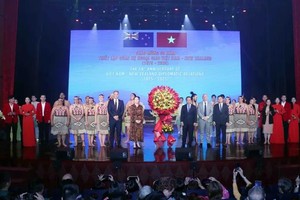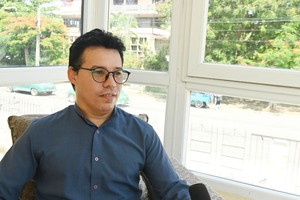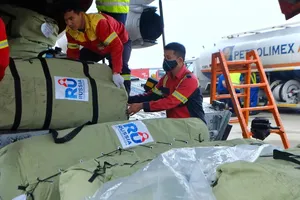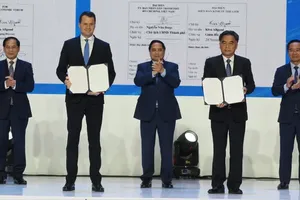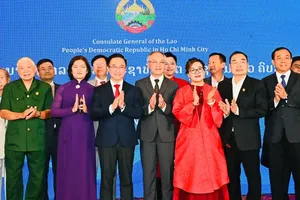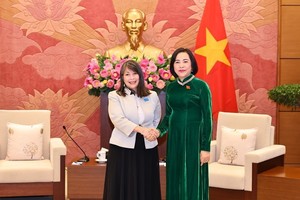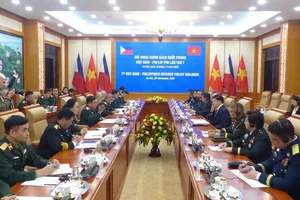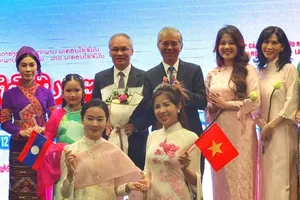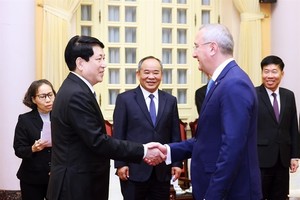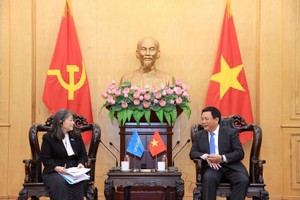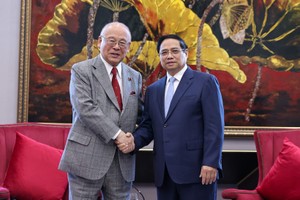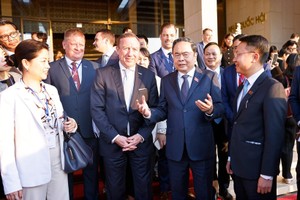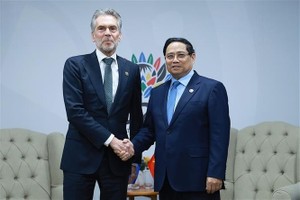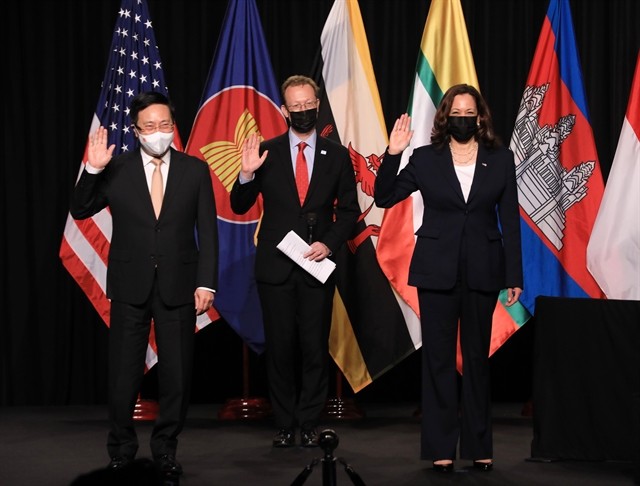 Deputy Prime Minister Pham Binh Minh (left) and US Vice President Kamala Harris at the launch ceremony. VNA/VNS Photo
Deputy Prime Minister Pham Binh Minh (left) and US Vice President Kamala Harris at the launch ceremony. VNA/VNS Photo
The office, based in Ngo Quyen street in downtown Hanoi, is one of the CDC’s four in the world, together with the East Europe/Central Asia office in Gruzia, the Middle East/North Africa office in Oman, and the South America office in Brazil.
It will strengthen the CDC’s ability to meet its mission of protecting Americans and people of the region by responding more rapidly to health threats wherever they occur and building key relationships to tackle shared health priorities.
Speaking at the ceremony, Vietnamese Deputy Prime Minister Pham Binh Minh said that over the past 20 years, health care cooperation has been a highlight in the ties between the US and the region and this is also a key area of cooperation in the Vietnam-US comprehensive partnership.
“We welcome the US decision to open this office in Hanoi to show the development and vast potential of the Vietnam-US comprehensive partnership. Vietnam will create every condition possible for the effective operation of this office,” he said.
The US’s CDC regional office in Hanoi will work closely with partners within and outside the region in pursuit of the crucial goal of ensuring the best health care services for the people, he added.
US Vice President Kamala Harris said it is one of four such offices in the entire world, and a true testament for the US’s commitment to this important region.
“In this new era, our world is interconnected and interdependent. Partnership is therefore essential. We must all be willing to take on the challenges together. Let's take them on together to create opportunities together. That is why we launch this CDC office and our work together is so very important.”
The US has pledged US$500,000 to the ASEAN Covid-19 Response Fund to support the purchase of more vaccines and provided more than $150 million in emergency assistance to the region, she said.
“With the launch of this office, we intend to build on these efforts and help to grow the public health infrastructure across Southeast Asia,” the Vice President said.
“We are working to train health professionals in the field of epidemiology. And that training programme has actually been in place in Asia since 1980.
“We are also investing in research and supporting the creation of emergency management systems. And we are working with all of you to develop the next generation of healthcare professionals.”
The Southeast Asia regional office is led by a Regional Director who is the most senior CDC official in the region and serves as the CDC Director’s representative, responsible for ensuring a coordinated and cohesive approach to the agency’s global health strategy.
An initial priority for the Southeast Asia regional office is the coordination of Covid-19 activities across the region, with support from Coronavirus Aid, Relief, and Economic Security (CARES) Act funding.
Priority areas of focus also include expanding regional public health laboratory training, developing innovative programmes to improve health for mobile and migrant populations, and expanding the reach of One Health (animal health) operations in and across countries in the region.
It also prioritises working towards the elimination of diseases such as measles, rabies, and malaria, and supporting US Government foreign policy initiatives in the region including the Indo-Pacific Strategy, US ASEAN Health Future, and the Lower Mekong Initiative.
Southeast Asia comprises of 11 countries and is home to over 687 million people and has a long history of working on health security issues because of significant experiences with emerging infectious diseases.
